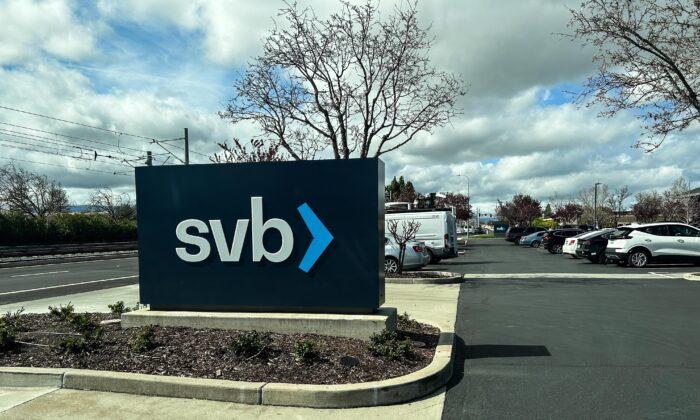Former President Donald Trump’s loosening of rules in the banking sector in 2018 “had nothing to do with” the failure of Silicon Valley Bank and Signature Bank, according to Federal Deposit Insurance Corp. (FDIC) Vice Chairman Travis Hill.
Five years ago, the legislation, which gained the support of Republicans and moderate Democrats, reversed some of the requirements in the landmark Dodd–Frank bill, which was enacted following the financial crisis more than a decade ago. The Great Recession-era bill mandated that banks with more than $50 billion in assets must go through an annual stress test by the Federal Reserve. The Trump-era legislative pursuit—S. 2155—raised the threshold to $250 billion.
Hill disagrees with some Democratic lawmakers’ charges, saying that S. 2155 “had nothing to do with” the recent regional banking failures.
“We have people searching under the couch cushions, under the carpets, under the mattress, in the storage closet, trying to find something, somewhere to tie the SVB failure to that law and its implementing rules,” Hill said during a speech at the Bipartisan Policy Center. “I think it’s quite obvious that S. 2155 had nothing to do with it.”

The Trump-era rollback didn’t alter capital standards for banks such as SVB, Hill noted. Instead, the stress tests failed to account for rising interest rates, which many say caused SVB to face the challenges it did, particularly as the financial institution invested in government bonds as the central bank tightened monetary policy.
Industry observers believe that if SVB had undergone rigorous stress tests, the company would have passed anyway, since the mechanisms determine how a financial institution would manage an environment of falling gross domestic product, rising unemployment, and tighter credit.
“The reasons for SVB’s failure are quite straightforward and easy to explain, and those rule changes had nothing to do with them,” Hill stated.
“When it comes to something like this, I encourage people to first look at the facts, and then arrive at conclusions, rather than starting with a conclusion you hope to be true, and grasping around for facts in support. And I urge policymakers to propose policy changes based on where we find evident holes in our framework, rather than just trying to undo policies of the past.”
He noted that there are “holes” in the current regulatory framework that need “tailoring.”
Hill asserted in his speech that proposals to toughen regulation and impose restrictions on medium-sized banks comparable to their larger counterparts aren’t the issue. According to the FDIC official, it’s instead about approaching interest rate risk correctly.
Despite the banks’ mismanagement, Hill agreed with the actions taken by the FDIC, the Treasury Department, and the Federal Reserve, conceding that he worried about the uninsured depositors who may have been saving for a home. He acknowledged that there were plenty of “unknowns about how far it may have spread” and a pressing need among officials to mitigate a contagion event.
“Ultimately ... it was really just about trying to stop what looked like a wave of bank failures,” he said.
Moving forward, supervisors will be researching and reviewing what happened to determine how these types of risks can be avoided in the future.
Meanwhile, the FDIC is poised to announce a plan next month requiring the U.S. banking sector to pay for the billions of dollars gone from the Deposit Insurance Fund.





